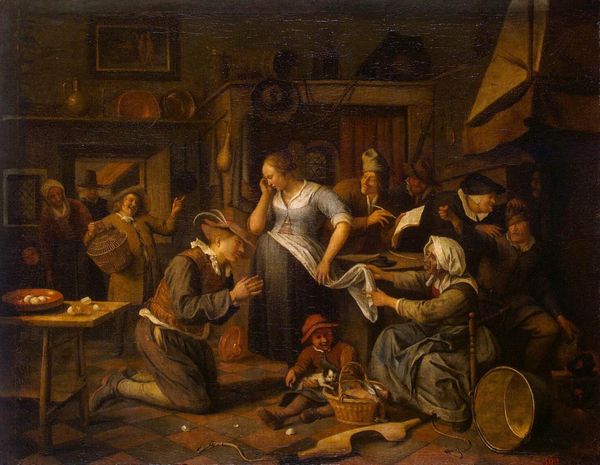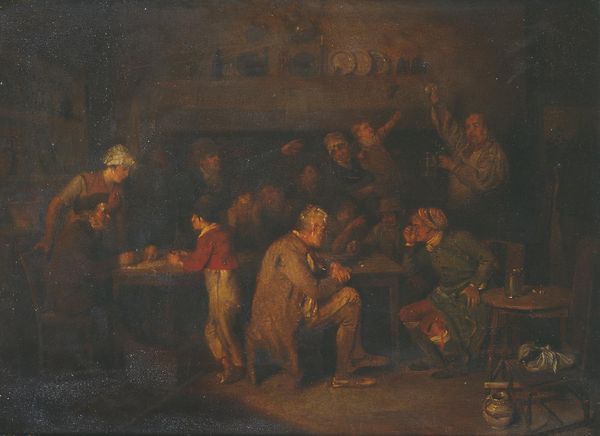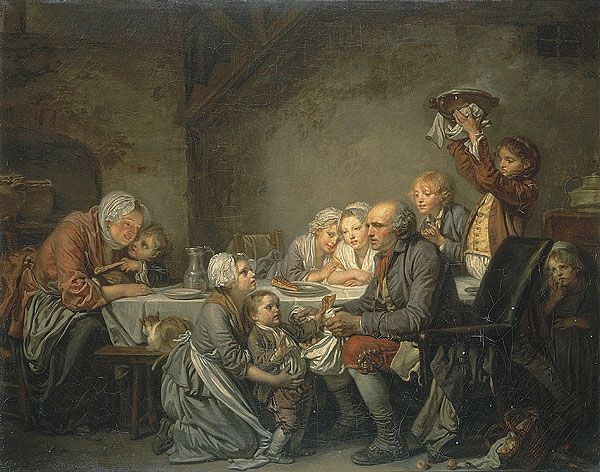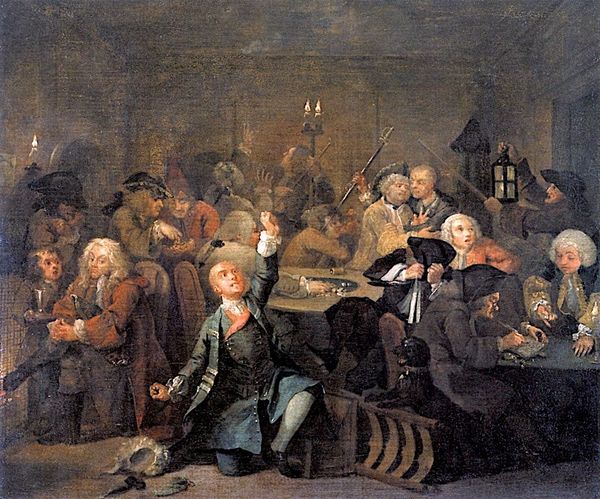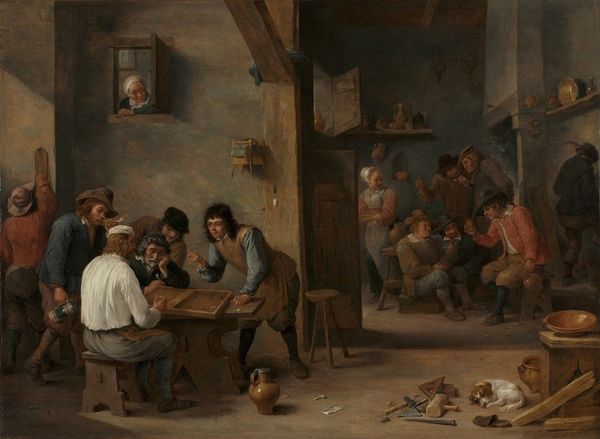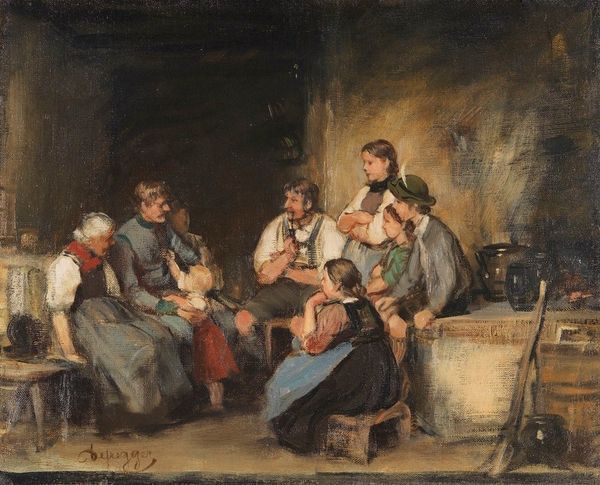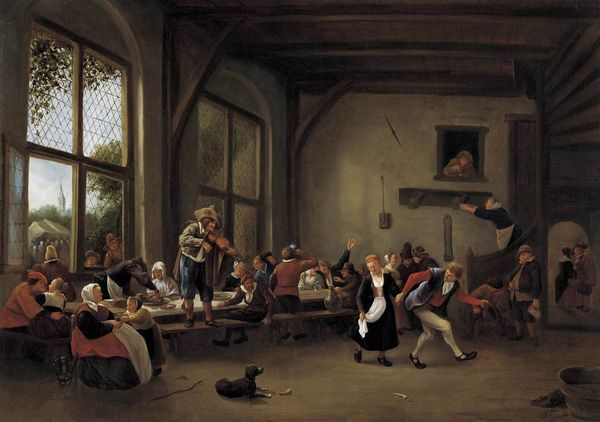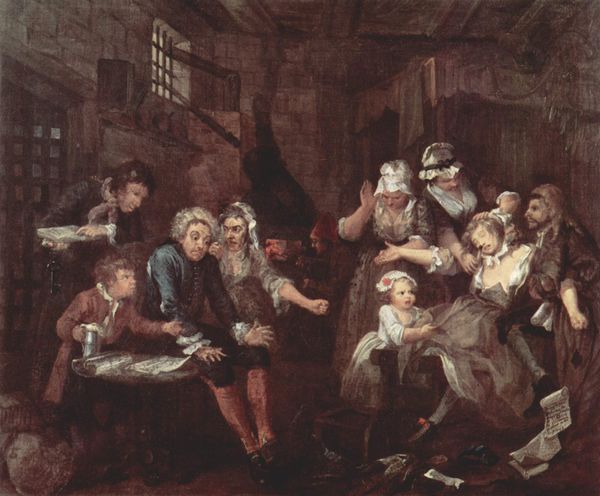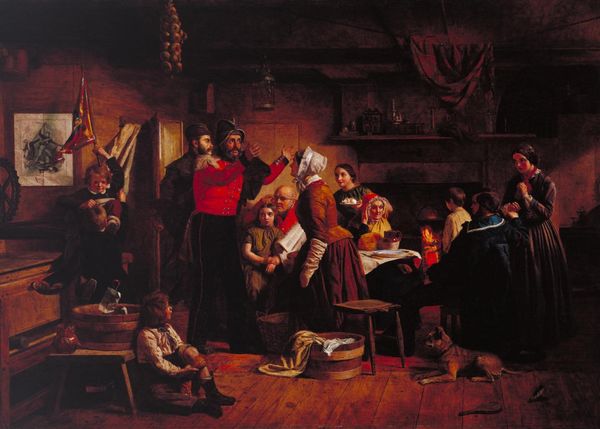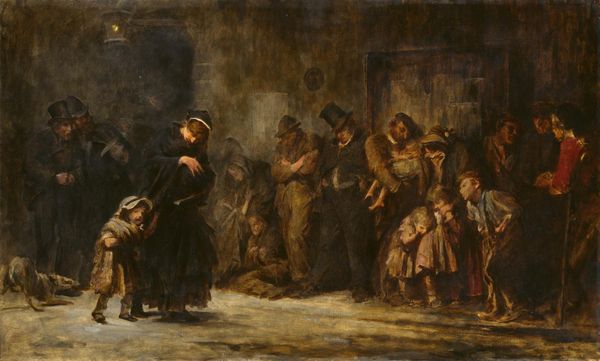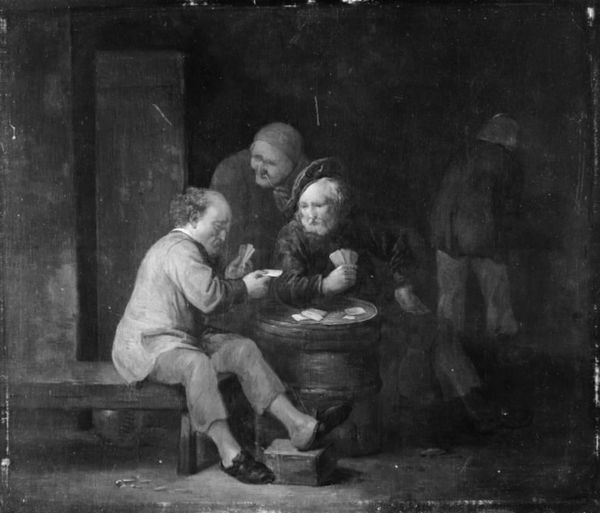
painting, oil-paint
#
painting
#
oil-paint
#
oil painting
#
romanticism
#
genre-painting
#
academic-art
Copyright: Public domain
Curator: Here we see "The Village School," a work rendered in oil paint by George Harvey, dating to 1825. Editor: What a cozy scene! I feel transported back to simpler times—it evokes the warmth of a dimly lit classroom buzzing with quiet activity. Curator: Indeed. Harvey's painting opens up a space to think about the social and political circumstances surrounding early 19th-century education and access to knowledge. Who had the right to learn, and what biases existed? The absence of girls equally seated at the table prompts a lot of reflection about who was denied education at the time, and what that meant for them. Editor: I agree. I love the children gathered around the teacher at the left. It really shows you where the focus lies in that composition; they appear eager but there's also a vulnerability to their youth that touches me deeply. What does this setting, with all its limitations, say about their futures? There is no light and so no great promise of bright sunny days in the outside world, just that single door barely showing the sun. Curator: Looking through the lens of feminist theory, it's important to ask why the artist positioned female students in the painting on the margins. Are they given less opportunity, and in that regard are they then devalued by a pedagogical system tailored mostly for the dominant, powerful male archetype? It raises significant questions about gender and power dynamics that were at play at the time, and arguably still are. Editor: Yes, that’s insightful. The barefoot child kind of symbolizes the economic disparities that exist. They aren’t hiding and you are really invited to see them, yet this adds another complex layer. How much potential might be squandered by these inequalities? It gives me a feeling of a loss but also quiet hope that there might be progress for that individual child. Curator: The piece allows us to investigate how education historically functioned as both a tool for social mobility, and unfortunately, a tool to reinforce the rigid structures and norms prevalent at the time. Editor: Absolutely, it feels very much like the quiet is holding secrets within it. Looking closer, I appreciate the nuances Harvey was able to capture in each individual's face. Curator: Harvey's work invites us to connect art history and current social discourse, offering crucial intersectional narratives to our museum goers. Editor: A nostalgic tableau indeed, a slice of yesteryear, prompting us to look critically at progress and what it really means.
Comments
No comments
Be the first to comment and join the conversation on the ultimate creative platform.
